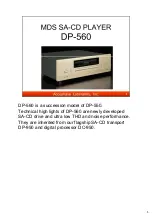
1 609 929 N83 | (14.1.08)
Bosch Power Tools
18
| English
An estimation of the level of exposure to vibra-
tion should also take into account the times
when the tool is switched off or when it is run-
ning but not actually doing the job. This may sig-
nificantly reduce the exposure level over the total
working period.
Identify additional safety measures to protect the
operator from the effects of vibration such as:
maintain the tool and the accessories, keep the
hands warm, organisation of work patterns.
Declaration of Conformity
We declare under our sole responsibility that the
product described under “Technical Data” is in
conformity with the following standards or
standardization documents: EN 60745 according
to the provisions of the directives 2004/108/EC,
98/37/EC (until Dec. 28, 2009), 2006/42/EC
(from Dec. 29, 2009 on).
Technical file at:
Robert Bosch GmbH, PT/ESC,
D-70745 Leinfelden-Echterdingen
13.12.2007, Robert Bosch GmbH, Power Tools Division
D-70745 Leinfelden-Echterdingen
Assembly
f
Before any work on the machine itself, pull
the mains plug.
Changing the Tool
f
Be cautious when replacing the planer blades.
Do not grasp the planer blades by the cutting
edges.
Possible danger of injury due to the
sharp cutting edges of the planer blades.
Use only original Bosch carbide blades (TC).
The carbide blade (TC) has 2 cutting edges and
can be reversed. When both cutting edges are
dull, the planer blade
15
must be replaced. The
carbide blade (TC) may not be resharpened.
Disassembling the Planer Blade(s)
(see figure A)
To reverse or replace the planer blade
15
, rotate
the blade drum
12
until it is parallel to the planer
base plate
10
.
n
Loosen the two fastening screws
14
with the
Allen key
17
by approx. 1
– 2 turns.
o
If necessary, loosen the clamping element
13
by giving it a light blow with a suitable tool
(e.g. a wooden wedge).
p
Fold the lateral blade-shaft protector
16
down and push the carbide blade
15
side-
ward out of the blade drum
12
using a piece
of wood.
Assembling the Planer Blade(s) (see figure B)
The guide groove of the planer blade always en-
sures continuous height adjustment when re-
placing or reversing it.
If required, clean the blade seat in the clamping
element
13
and the planer blade
15
.
When assembling the planer blade, ensure that it
is seated properly in the blade holder of the
clamping element
13
and aligned flush at the side
edge of the rear planer base plate
10
. Afterwards
tighten the 2 fastening screws
14
again with the
Allen key
17
.
Note:
Before restarting, check if the fastening
screws
14
are tightened well. Rotate the blade
drum
12
by hand and ensure that the planer
blade does not graze.
Dust/Chip Extraction
f
Dusts from materials such as lead-containing
coatings, some wood types, minerals and
metal can be harmful to one’s health. Touch-
ing or breathing-in the dusts can cause aller-
gic reactions and/or lead to respiratory infec-
tions of the user or bystanders.
Certain dusts, such as oak or beech dust, are
considered as carcinogenic, especially in con-
nection with wood-treatment additives (chro-
mate, wood preservative). Materials contain-
ing asbestos may only be worked by
specialists.
Dr. Egbert Schneider
Senior Vice President
Engineering
Dr. Eckerhard Strötgen
Head of Product
Certification
OBJ_BUCH-644-001.book Page 18 Monday, January 14, 2008 10:56 AM
















































